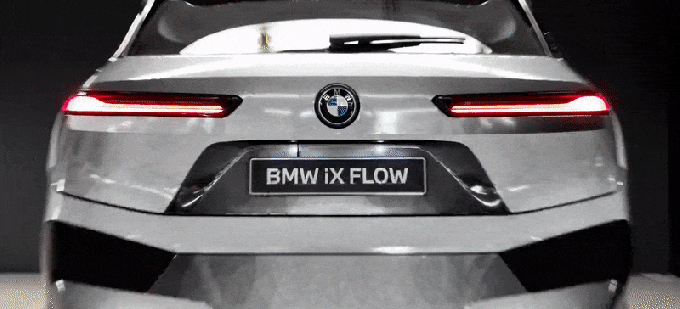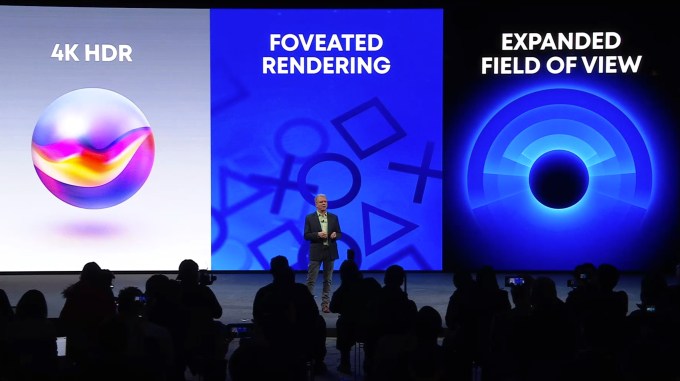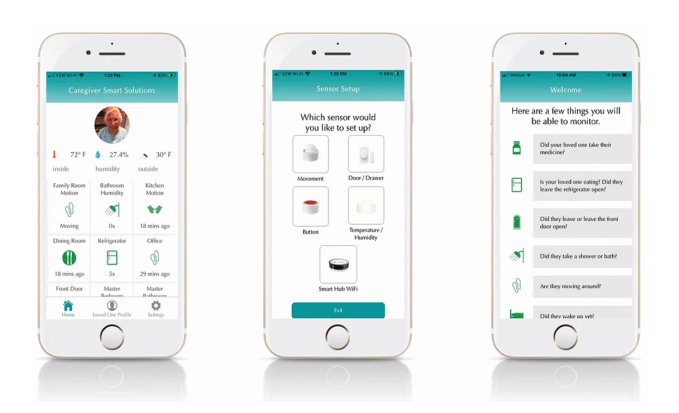Be it virtual, in-person, or some mix of the two, CES is a beast. How could you keep up with all of the news flooding out of the show? You can’t, really. The big outlets each put a small army on CES coverage and only really scratch the surface.
With that in mind, and with CES 2022 now wrapped, we figured it was worthwhile to bring it all together in one neat little box — a recap of our top stories of the week, the trends we noticed, and some of our favorite bits. It’s by no means exhaustive, but it’ll give you a good sense of the show if you were too busy to pay attention in realtime.
The top stories:
We wrote up many, many, many news items from CES. Can’t read them all? Here’s some of the stuff that folks read and shared the most:

Image Credits: BMW
BMW shows off a color-changing car
It’s like something out of a sci-fi flick: push a button, and your car changes color. Based on E Ink tech along the same lines as a Kindle screen, it’ll only flip between black/white/shades of grey… but still — wow. Don’t go looking for a pre-order page, though… for now, it’s just a tech demo.

Image Credits: Nvidia
Nvidia launches the $249 GeForce RTX 3050
Between crypto miners, resellers, and chip shortages, good graphics cards are hard to come by right now — especially if you don’t want to pay a huge markup. So it makes sense that a great card meant to ship at a budget-friendly price would grab a lot of eyes… but will resellers just gobble up all of these ones, too?

Image Credits: Nvidia
Nvidia expands its GeForce Now game streaming ecosystem
Nvidia had a good bit of news around its game streaming service, GeForce Now: new games, free subscriptions for select AT&T customers, and plans to build it right into Samsung TVs.
Nvidia had quite the CES; while it didn’t break the top stories list, its announcement that it is opening up its Omniverse tech to more creators also pulled a ton of eyes.

Image Credits: Daan Tech
Meet Bob, a cute little dishwasher that saves water and zaps bacteria
Want a dishwasher, but dont have space and/or don’t want to deal with ripping out cabinets or installing water lines? Bob lives on your counter and you add the water with a pitcher. Plus you can use its water-free UV-C mode to disinfect things like phones, or keys, or other things that can’t get wet. Plus it’s hella cute.

Image Credits: Scanbo
How sweet is your blood? Scanbo gives an answer without poking holes in you
“How sweet is your blood?” writes Haje in a wonderfully-Haje headline. It’s early days, but AI company Scanbo is aiming to do glucose monitoring without the painful, exhausting, never-ending finger pricks

Image Credits: Sony
Sony gives first details on next-gen PS VR2 headset for PS5
We’ve known for a while that Sony has been working on a new VR headset for the PS5, but now we know a lot more… like that it’s called PS VR 2, has a much improved display, supports foveated rendering, and more.

Image Credits: GAF Energy
GAF Energy takes on Tesla’s Solar Roof
“GAF Energy, a division of the roofing giant, claims its new solar shingles are simple enough to install that no special equipment or knowledge is required, making home renewable energy that much more accessible.” writes Devin Coldewey.

Image Credits: Brian Heater
Power1 is an iPhone battery case with a spot for your AirPods
Ever wished you could just cram your AirPods right into your iPhone instead of carrying around an extra little widget? This case makes it happen. Brian Heater goes hands on with a prototype.

Image Credits: Hyundai
Spot goes into the metaverse
“By connecting robots to the metaverse, we will be able to move freely between both the real world and virtual reality,” says Hyundai Motor Group President Chang Song in a sentence that explodes my brain a little. Will traveling the planet — or, as Hyundai’s promo video suggests, Mars — in a robot avatar be a totally normal thing at some point?

Image Credits: Sony
Sony explores building electric cars
Sony has been experimenting with cars for a few years now, showing new prototypes at each of the last two CES. Now they’ve announced the formation of a new company, Sony Mobility Inc., just to figure out how to commercialize their EV efforts.
The Trends:

Schlage Encode Plus Smart WiFi Deadbolt
Why Matter Matters
Smart home devices can be great… once you get them up and running. But for most people, just figuring out what works together is a chore. A lot of the biggest tech companies (Apple, Amazon, Google, etc.) have banded together to build a protocol called Matter, and Christine Hall has a look at how those efforts are going so far

Image Credits: Yukai Engineering
Robots roll out
Are we close to having Rosie the robot roaming our homes? Or are we forever stuck with puck shaped robo-vacuums that eat our socks? In last weeks Actuator newsletter, Brian Heater gave us a look at where consumer robotics are today, and how it has moved forward over the years. Plus there’s a robot cat that nibbles on your finger for some reason?

Image Credits: Blink Charging
EV Chargers charge up
Electric vehicles tend to grab most of the headlines… but what about the boxes that you plug them into to give’m juice? There’s growing competition in the space, and Rebecca Bellan has the overview about what each team is doing differently.

Image Credits: Cake
E-Bikes and Scooters take charge
What’s left to build in the world of e-bikes and scooters? How can one fancy electric scooter differentiate itself from another? Our mobility team took us on a ride through all of the micro-vehicle news from the show.
VR Simmers
Rather than any one headset or “killer app” making VR an overnight ubiquitous thing, its story so far has been one of incremental progression — and CES this year moved it a few more steps down the road.

Image Credits: Samsung
Metaverses metaversed the metaverse
Metaverse? Metaverse! “Metaverse” was by far the buzziest word at CES this year, even if a few companies’ use of the word was… questionable.

Image Credits: TP-Link
Gadgets galore
The organization behind CES might not want anyone to call it “Consumer Electronics Show” anymore (as it aims to broaden its scope to all of technology, not just the electronic bits) but there are still lots, and lots, and lots gizmos and gadgets to be found. Heater took a look at some of the most interesting ones.

BOCCO emo robot
Elder tech can help everyone
As much as we’d love to pretend otherwise, we all get old. Before we know it, we’ll have a generation of seniors that grew up from day one with the Internet always within reach. How can tech evolve to help older people live more comfortably? From robot companions to lightbulbs that might help detect falls, Catherine Shu rounded up the latest advancements in elder tech.
Our favorite bits:
We spent the last week with our heads buried in CES news — and, for much of the CES team, it was our 7th or 8th or zillionth time doing so. What stood out to us? Here’s some of the stuff we’re still thinking about.
John Deere’s self driving tractor
The average age of the American farmer is 57.5 years. Field work is backbreaking, intensive and increasingly difficult to staff. Farming is one of those roles that makes a lot of sense to automate, something John Deere has been working for several years to perfect. Available later this year in select U.S. Markets, the 8R finally brings full autonomy to the company’s popular tractor line, with a number of features currently in the works.
— Brian Heater
Mercedes-Benz’s Vision
This isn’t just a concept car that will never see the light of day. Mercedes tapped the expertise of its R&D department, Formula 1 and Formula E teams to develop advanced components for this concept that will show up in future models, starting in 2024.
Of note, they improved the energy density of the battery by making “significant progress” in the chemistry of the anodes, which has higher silicon content and advanced composition that allow it to hold considerably more energy than commonly used anodes. Translation: More range packed into a tinier package. Another item that will show up in 2024 includes ultra-thin roof panels that feed the battery system for some extra range.
— Kirsten Korosec
BMW’s color changing concept car
Will you be able to buy BMW’s color-shifting car any time soon? Probably not. Is it super practical? Nope! Who knows how much it’ll cost to replace a door panel when someone bumps this thing with a full grocery cart. But one thing I dearly miss about in-person CES is the absurd, “we made this mostly just to flex” aspect of it all, and this one fits squarely in that category.
—Greg Kumparak
The Labrador robot
We hear a lot about the promise of robotics, but the most useful robots for people aren’t going to look like us.
They’re going to be things like Labrador, which is essentially a mobile table. It’s intended for elderly folks and those who may have trouble with everyday tasks, for example, carrying a plate and a drink from the kitchen to the dining room, or bringing the laundry hamper to the washer. With built-in voice controls you should be able to tell it “wait in the bedroom” or “come to me.” It’s the kind of thing that could make a lot of people’s lives easier, and something I hope we see more of in robotics.
— Devin Coldewey
Mui Lab’s “calm” smart home device
One of the more interesting smart home devices at CES was the Mui Labs Matter-ready “muiPlatform” that turns smart home devices into “calmer ones.”
The more devices we add to our home, the more we have cluttering up our furniture. Mui Labs lets you embrace a minimalist lifestyle while also enabling your Amazon Alexa to function more like a piece of art on your wall with a visual interface.
— Christine Hall
Bob
To me, some of the most interesting technologies at CES are about how we can use our limited resources better. With California being in perma-drought, Bob caught my eye.
Bob is a tiny dishwasher aimed at households of 1-2 people, and uses a lot less water than washing dishes by hand. It even has an UV mode to clean items without using any water at all.
— Haje Jan Kamps


































